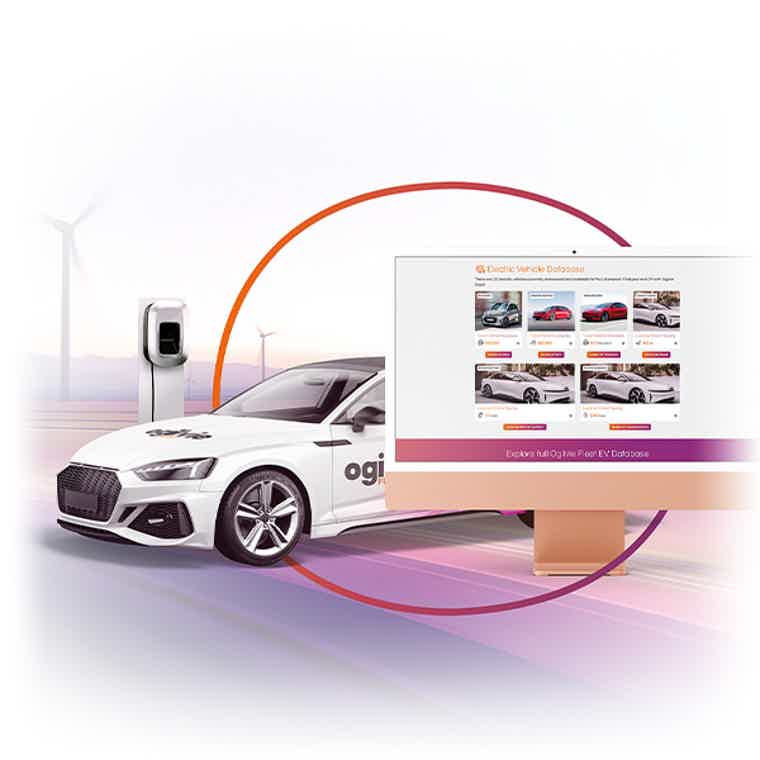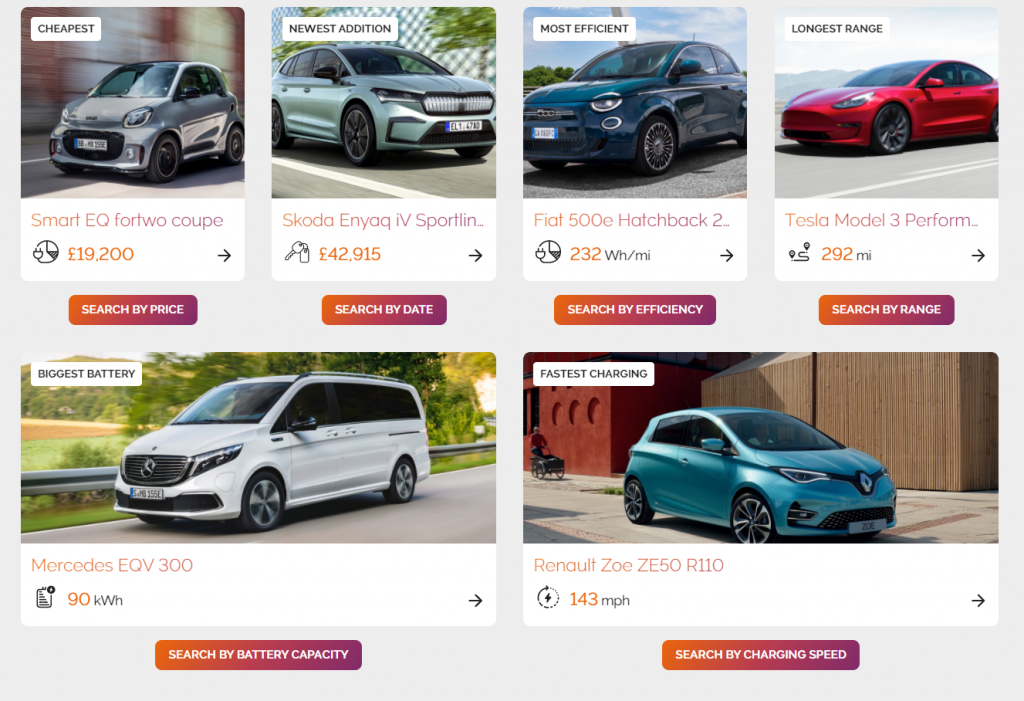Ogilvie Fleet launches EV Database
Posted on 31 Aug 2021

2 min read
Ogilvie launches Electric vehicle database – helping consumer make informed decisions on their switch to electric. The database, which currently includes all 132 electric cars available, is freely available for fleets, company car drivers and consumers to research their EV purchase.
Drivers researching their next company, salary sacrifice, or private car can quickly compare the cheapest, the most efficient, or longest range car, along with a host of other parameters. New models soon to be launched or that can be pre-ordered, including brands such as Byton and Lucid are also included in the database.
The database is accessed via Ogilvie Fleet’s website at electric.ogilvie-fleet.co.uk and is fully also optimised for mobile devices.
Every model includes detailed information about its battery and charging capabilities, right down to which side of the car its charging port is situated – something which could be pivotal in deciding where to place a home charger.
Benefit in Kind tax data for 20%, 40% and 45% tax-payers is listed for individual models while the car’s vital statistics such width, length and height are included.
Key data such as charging time and whether the car allows for fitment of a towbar and its towing capacity create a comprehensive picture for drivers prior to ordering their next car.
“The process of choosing an EV brings with it many questions which can take hours to find answers to. That’s why we have launched our free-to-use web platform to help provide peace of mind for drivers and companies powered by an intuitive search engine,” said Ogilvie’s Sales and Marketing Director Nick Hardy.
“The EV database also includes critical costs associated with NIC and corporation tax savings to enable companies to make the best possible purchasing decision,” he added.
The EV database will also be updated later in the year to include category N1 vehicles, following a huge increase in demand for electric LCVs.
The launch of the EV Database follows the recent Ogilvie True Cost updates which allows fleet managers to accurately predict the real life cost of fully and part electric cars.




